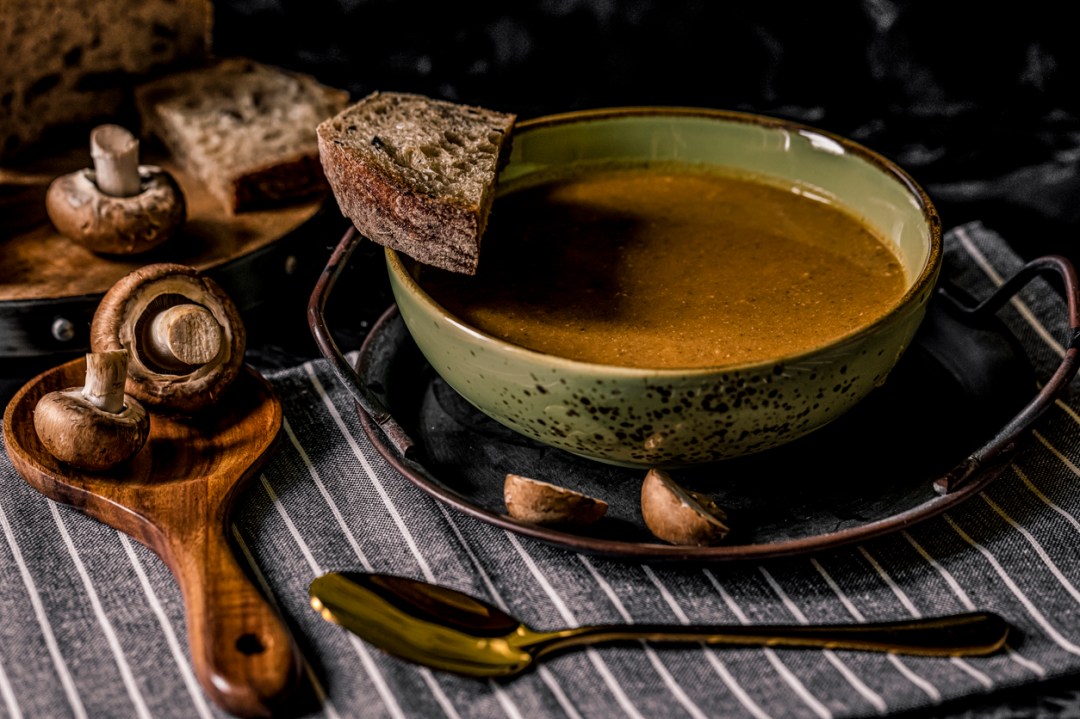The first time I tried the well-known Hungarian wine Tokaj, which I bought from an eastern European delicatessen in London, I was so taken with it that it quickly became a verb – and the expression ‘I was a bit Tokaj’d last night’ stuck. But I soon realised that there are so many wonderful versions of this wine that you will find one to suit every occasion, and a match for pretty much anything you eat. Options include bone dry, light as a feather, sweet, robust, and tannin-rich red. And I’m lucky enough to be drinking the dry variety here in Budapest. It has just a hint of honey, making it perfect with the dishes made with cheese and paprika sauces that are so popular across this landlocked nation.
‘Delicate food has no place in traditional Hungarian restaurants; it is rare to see plates adorned with edible flowers
I’m here for work, but – having realised during my many visits to this country that it’s not all about goulash – I’m making sure I have time to do a proper tour of the less well-known dishes and ingredients. The winters are cold (though the summers can be very hot in parts of Hungary) and there are Jewish, Ottoman and Austrian influences. The bread and sweet pastries are very good indeed, easily rivalling those found in Viennese cafés, which always feel a little bit unwelcoming to me. There’s lots of pasta as well as excellent peasant food, including soups thickened with bread. But I’m here at the end of October, the weather is lovely and warm, and I’m walking around in a T-shirt, seeking out the lighter dishes this climate calls for.
I love the unripened curd cheese, snow white and fresh, which can be eaten with honey or sprinkled with chilli as a savoury snack on toast. The Hungarian take on the greasy spoon is known as an étkezde, and in those, I’ve eaten delicious cabbage rolls and, of course, goulash soup in the winter.
The lángos is a pizza-like flatbread the size of a large hand, deep-fried and topped with the likes of sour cream, wild garlic, pork fat, and cheese. You’ll find it in sandwich shops and market stalls everywhere, and it is delicious. You can also get sweet ones with Nutella, or heavier ones topped with cooked cabbage, sausages and red onions.
As I make my way home from the airport, I’m carrying a bag filled with delicious Piros Arany, a hot paprika paste with an authentic spicy pepper flavour – perfect for adding to stews and soups (or as a marinade to add extra bite to dishes). I’ve also found room for a few Csabai vastagkolbász – this is a sausage made of minced pork meat and fat, flavoured with garlic, caraway, salt and, you guessed it, paprika. It is then smoked, cured, and dried. Delectable.
I make Hungarian cucumber salad at least once a week. Sliced onion (soaked in iced water for an hour beforehand, to remove the pungency), thinly sliced cucumber, dill, olive oil, white wine vinegar, salt and lots of black pepper. Some add sour cream, but I love the clean flavour, particularly alongside rich dishes. And how could I possibly hold out against lekvár – a very thick, rich spread made from apricots, cherries, and prunes? I like it on pancakes or poppy-seed toast.
For lunch on my last day in Budapest, I found a perfect little café in the Jewish Quarter, and ordered mushroom soup. I am not a particular fan of either soups or mushrooms, but when I saw it being served up, I found myself unable to resist. It was packed with cremini mushrooms, good quality fungi with a dark colour and very meaty texture. The stock was rich and packed with herbs, sour cream and close-to-caramelised onion. The top was sprinkled with what is known as ‘half-sharp’ paprika, a little spicier than its sweeter counterpart. It was served with a chunk of country bread that had a hard, crispy crust. Perfect.
Delicate food has no place in traditional Hungarian restaurants; it is rare to see plates adorned with edible flowers or pretty garnishes for the sake of it. That suits me just fine. One word of advice, however. If someone offers you a glass of pálinka – booze made from plums, grapes, and cherries or peaches – be careful. I took a sip and felt the burn in my throat for hours. I also felt its effects – which is no surprise as pálinka is around 60 per cent alcohol. Stick with a nice glass of Tokaj instead.








Comments